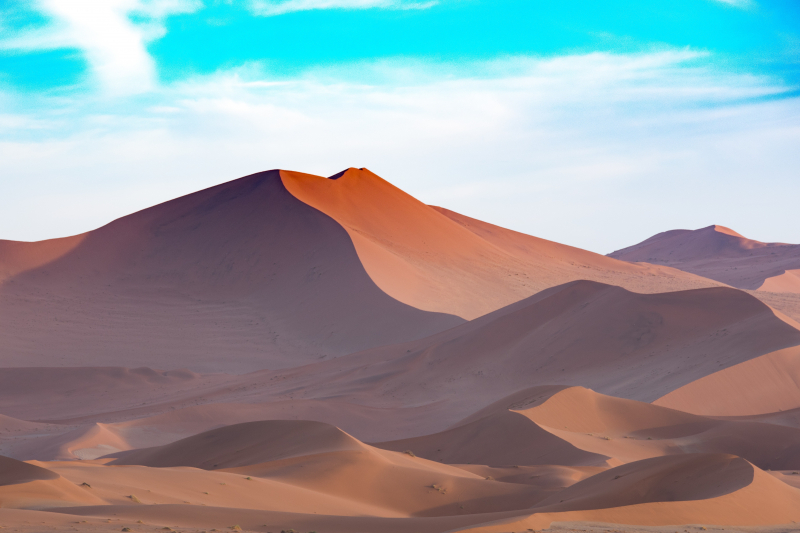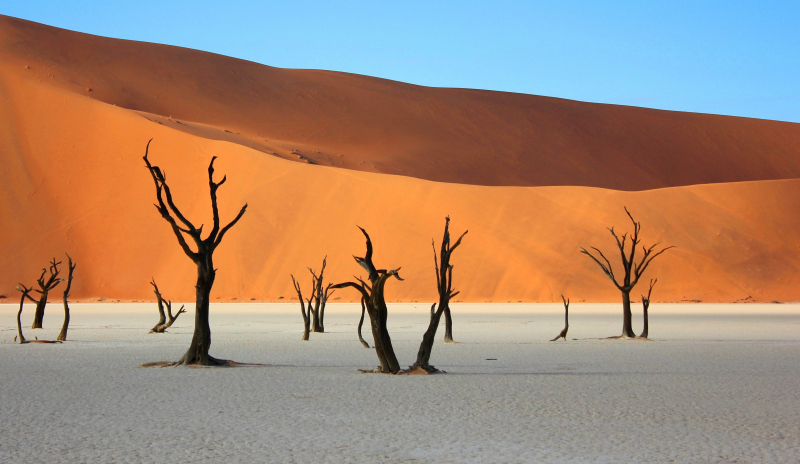Geography
The first reason why 97% of Namibia is empty is the country's geography. The Namibian landscape consists generally of five geographical areas including the Central Plateau, the Namib, the Great Escarpment, the Bushveld, and the Kalahari Desert. Two of the main geographical areas are deserts - the Namib and the Kalahari Desert, and the area of the pure desert takes up to 16% of the whole country, making it hard to get resources to sustain people living in Namibia. In fact, due to this geographical phenomenon, Namibia has the least rainfall of any country in sub-Saharan Africa.
Namibia is situated between the Namib and the Kalahari deserts. On one side of Namibia, the Namib desert stretches along the entire coastline and varies between 100 and 200 kilometers (60 and 120 mi) in width. This desert is a gigantic expanse of moving gravel plains and dunes of all shapes and sizes, literally blocking the country from the ocean. As the result, the desert and saltwater make it difficult to sustain life near the coast. On the other side, the Kalahari desert is one of Namibia's well-known geographical features. Unlike the Namib desert, the Kalahari desert has a variety of localized environments, including some verdant and technically non-desert areas. In fact, approximately 10 percent of the world's succulents are found in this area. However, it still being the desert is a big reason why people find it hard to live there, making it a part of the 97% "empty" area of Namibia.







